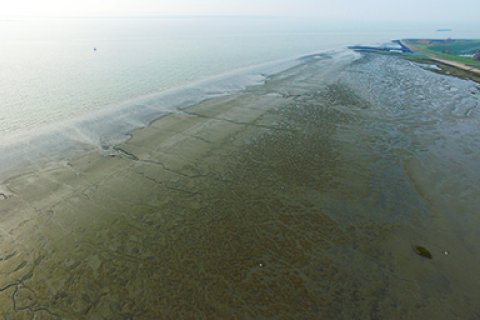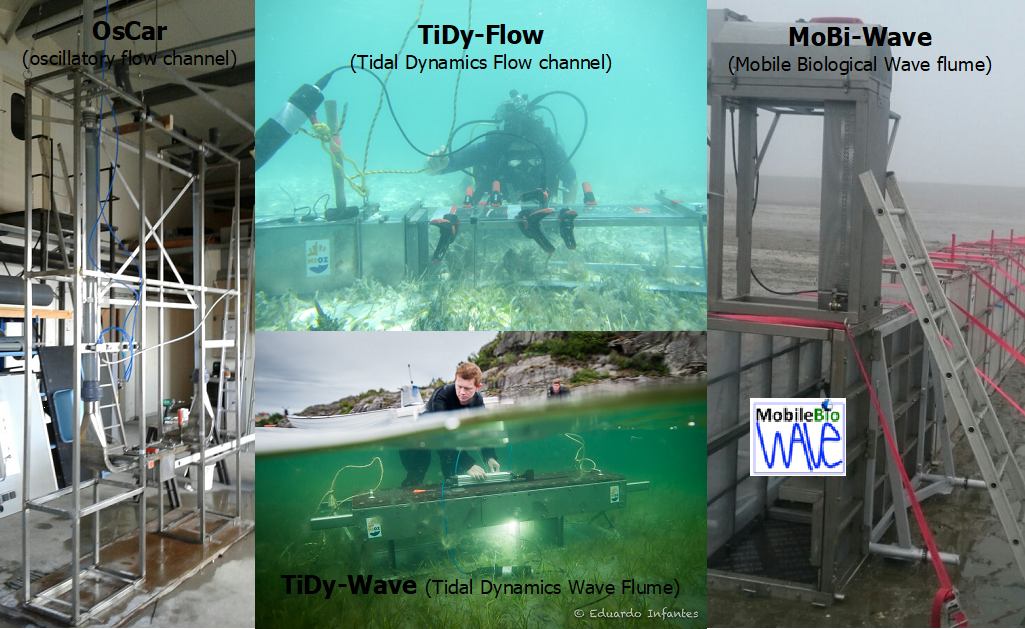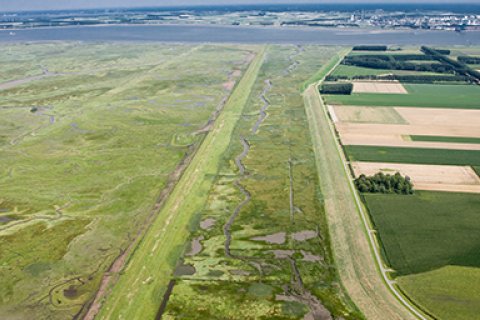Coastal protection based on nature: climate resilient?
Inaugural lecture Tjeerd Bouma
Climate change is forcing us to come up with new forms of coastal protection. Solutions based on nature are highly promising. However, before we can deploy such natural systems as a defence against the rising sea level, we first need to know how climate-resilient they are. Little is known about this at present. Tjeerd Bouma will therefore investigate this as a newly appointed professor at Utrecht University and as a researcher at the Royal Netherlands Institute for Sea Research (NIOZ).

Dykes will become stronger if we increase the biodiversity in the vegetation. Seagrass fields before the coast can protect tropical beaches sustainably. So in one way or another, nature contributes to the security of almost all coastal protection systems.
Changing plant species
However, the ecosystems that we want to deploy for coastal protection are also vulnerable to the consequences of climate change. As a result of global warming, the composition of plant species is starting to change. That can have major consequences for the stability and effectiveness of coastal protection measures in which nature plays a large role.
Heavier storms
The frequency and intensity of storms are also changing due to global warming. However, we still know very little about the effect of this on coastal protection. NIOZ has developed new, unique research instruments to investigate this: so-called field flumes. Utrecht University and NIOZ are jointly using these to investigate whether ecosystems can survive such storms if we deploy them for coastal protection. Because, according to Bouma, ‘we can only make sustainable use of natural processes for coastal safety through a good and fundamental understanding of how nature works.’

Broad coastal zones of the future
Therefore what should the broad coastal zones of the future look like? ‘We need to develop robust coastal landscapes in which we make smart use of natural processes. But at the same time, we should not forget that people also live there and need to provide for their livelihoods in order to feel both prosperous and safe’, says Bouma, who investigates this in spatial studies. ‘As a researcher, it is also important to consider the societal context in this.’ Bouma will therefore collaborate with researchers from other disciplines at Utrecht University. He hopes that his appointment will further expand the collaboration between Utrecht University and NIOZ.
Knowledge transfer
And once we know which natural forms of coastal protection are climate resilient, then how can we construct these? How do we ensure sufficient support for these types of solutions that require space of course? According to Bouma, it often appears that not all knowledge available is used effectively in such processes. A better explanation of the importance of creating broad coastal zones for our coastal safety in the long term might have put the discussion about projects like the Hedwigepolder in Zeeuws-Vlaanderen in a completely different light. The transfer of knowledge from science to society is therefore crucial in Bouma’s opinion, as equally collaborating with societal partners.

To ensure that the research results are implemented in practice, Bouma is already working with companies to examine how we can construct or restore coastal protection based on nature at locations where we need it for sustainable, climate-resilient coastal protection. ‘The current high threat to our coast means that we should not throw in the towel. Instead, I would like to see researchers joining forces to consolidate knowledge from different disciplines so that society can be offered creative solutions. That is what I would really like to contribute to as an ecologist.’
On Wednesday 20 November, Tjeerd Bouma held his inaugural lecture as a Professor of Biogeomorphological ecology of estuaries, deltas and coasts at Utrecht University. The full text of his inaugural address is available here.

